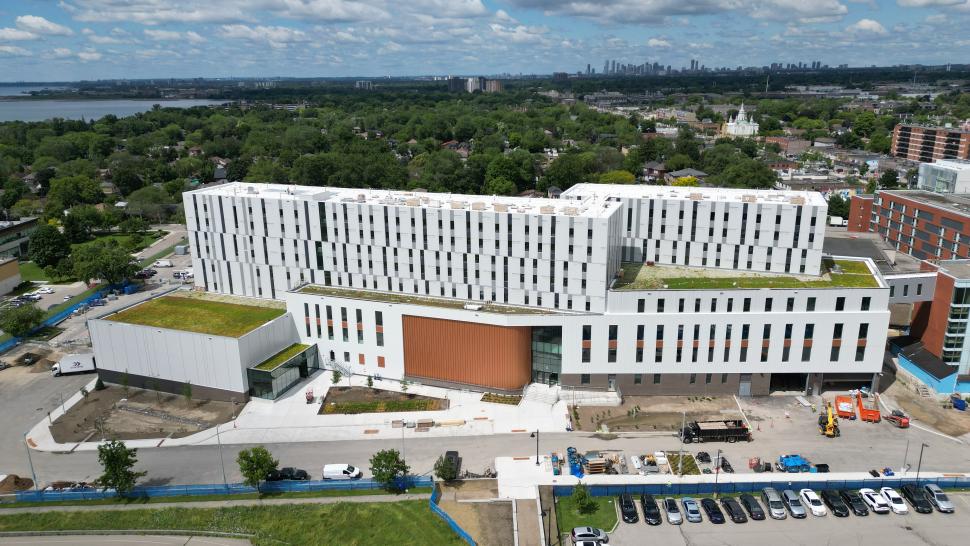
Humber Polytechnic is creating the blueprint on sustainability after establishing an aggressive timeline to reach net zero more than two decades earlier than its original goal of 2050.
Humber’s Climate Action Plan, which was released in 2022, included the commitment to reach net zero GHG emissions by 2050. However, that timeline has been significantly accelerated as Humber pursues innovative carbon reduction strategies.
Aman Hehar, associate director, Energy and Climate Change, said Humber has identified heating as its largest source of emissions. As an institution, Humber is moving away from natural gas to electrified heating through technologies such as electric boilers and heat pumps that extract energy from the air, ground or waste heat sources.
For example, the SWITCH project has Humber replacing the entire central heating system at North Campus with a new one that generates heat using mostly electricity.
"I’m proud to say that our net-zero commitment stands as one of the most ambitious among post-secondary institutions globally and we’re achieving net zero in 2029 by not only accelerating project timelines but also strategically prioritizing initiatives that will deliver the greatest impact on our overall emissions,” said Hehar.
“We know this is the decisive decade,” said Lindsay Walker, director of Sustainability at Humber. “To prevent the worst global climate impacts, emissions need to be drastically reduced by 2030. At Humber, we’re committed to achieving this, demonstrating that it’s possible, and sharing what we learn with the world.”
There are four main decarbonization projects to be undertaken at Humber that will be prioritized to reach the 2029 goal. They include:
• North Campus Central Plant Natural Gas Heating to Electric Heating Conversion. This project involves the installation of a new geothermal system, which will build on the infrastructure that will be installed as part of its SWITCH project, namely the heat recovery chillers and electric boiler providing heat to a new low temperature hot water network.
• Lakeshore East Natural Gas to Electric Heating Conversion. This project is the electrification of heating systems supplying heritage buildings.
• The Centre for Skilled Trades and Technology Natural Gas to Electric Conversion. This involves the replacement of end-of-life natural gas-fired units with electric air-source heat pumps that significantly reduce natural gas use.
• Lakeshore Building B and Residence R Building. This involves replacing gas-fired boiler systems with electric-based heating.
Hehar said the projects listed above would eliminate most of Humber’s fossil-fuel based heating sources.
“As we accelerate our goal to make Humber a net-zero institution in 2029, we are not just responding to the urgency of the climate crisis — we are leading the way as Builders of Brilliance. Our commitment to sustainability reflects our dedication to shaping a brighter, more resilient future for our students, our community and the world. Together, we’re creating innovative solutions that will define the next generation of climate action leadership,” said Ann Marie Vaughan, president and CEO, Humber Polytechnic.
Humber’s leadership in sustainability is well-regarded within the post-secondary sector. In September, Humber was recognized as the highest-ranking institution in the Associate category according to the Sustainable Campus Index that’s put out annually by the Association for the Advancement of Sustainability in Higher Education (AASHE).
As part of Building Brilliance: Our Vision to 2030 and Beyond, we are shedding the traditional constraints of higher education and reimagining a model that both adapts to and shapes the world around us. At Humber, we don’t just want to have an impact – we want to drive it. By staying true to the values of courage, innovation, equity, sustainability, and health and well-being, values that have always guided us, Humber will continue to lead post-secondary education into 2030 and beyond. By making bold decisions around how we fundamentally operate, we can reimagine learning, forge deeper partnerships and drive impact, creating real value and progress. This story is an example of how we are building brilliance by driving impact every day.